Amelia Earhart was an American aviator famous for being the first woman to fly solo across the Atlantic. After being unsure about what career path she should follow, Amelia’s passion for flying was sparked by a 10 minute plane ride she took in December 1920. In 1923, she was issued a pilot’s license. She first gained international fame in 1928 after becoming the first woman to fly across the Atlantic, albeit as a passenger. Feeling like a “sack of potatoes” during the flight, Earhart resolved to make the dangerous flight alone, a feat she accomplished in 1932 and for which she was honored with the Distinguished Flying Cross. Earhart also created numerous other records in female aviation and was a leading voice for promoting women pilots. In 1937, during an attempt to make a circumnavigational flight of the globe, Amelia Earhart disappeared over the Pacific near Howland Island and was never seen again. There are numerous theories about her disappearance but it still remains a mystery. Know more about perhaps the most famous female pilot in aviation history through these 10 interesting facts.
#1 SHE SPENT A LOT OF HER CHILDHOOD PLAYING WITH HER YOUNGER SISTER
Amelia Mary Earhart was born on July 24, 1897, in the home of her maternal grandfather in Atchison, Kansas, United States. She was the second child of Samuel “Edwin” Stanton Earhart and Amelia “Amy” Otis. According to family custom, she was named after her two grandmothers, Amelia Josephine Harres and Mary Wells Patton. Edwin and Amy had an infant stillborn in August 1896 and, after Amelia, they had another daughter in December 1899, who was named Grace Muriel Earhart. Amelia was nicknamed “Meeley” while her sister Muriel was called “Pidge”. The two sisters were inseparable in childhood and they shared many activities including collecting insects and frogs; exploring the neighborhood; climbing trees; playing sports; and hunting rats with a .22 caliber rifle given to them by their father.
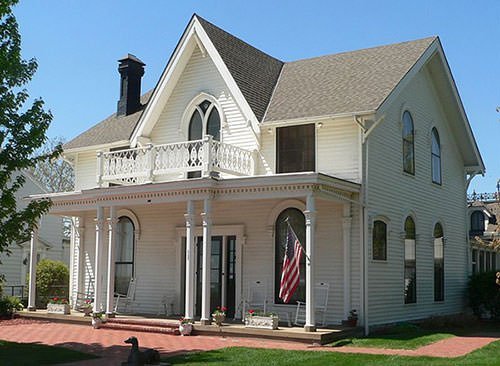
#2 SHE SPENT A COMFORTABLE CHILDHOOD FOLLOWED BY DIFFICULT YEARS IN HER TEENS
Amelia spent much of her early childhood in the upper-middle class household of her maternal grandparents Alfred and Amelia Otis. Alfred Otis was a former federal judge, the president of the Atchison Savings Bank and a leading citizen in the town. In 1907, Amelia’s father Edwin Earhart was transferred to Des Moines, Iowa. The two sisters remained with their grandparents in Atchison. In 1909, they moved to Des Moines to live with their parents and Amelia attended a public school for the first time entering the seventh grade at the age of 12 years. She had previously been home schooled. Edwin Earhart had a drinking problem and struggled to maintain constant employment. Amy separated from her husband a number of times. In 1915, she moved, along with her children, to Chicago to live with friends. Here, Amelia attended Hyde Park High School and graduated from it in 1916. The difficulties faced by Amelia in her teens strengthened her resolve to become independent and not rely on others.
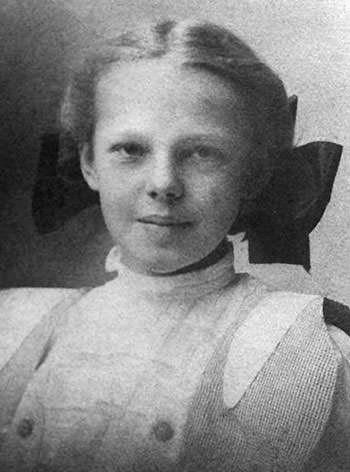
#3 EARHART WORKED AS A NURSE’S AIDE IN A MILITARY HOSPITAL DURING WWI
After graduating from high school, Amelia joined the Ogontz School in Rydal, Pennsylvania. During Christmas vacation in 1917, she went to Toronto in Canada to visit her younger sister Muriel, who was studying there. World War I was going on and Amelia was affected by the sight of hundreds of wounded soldiers. She decided to drop out of college and instead took training as a nurse’s aide from the Red Cross. Earhart worked as a nurse’s aide at the Spadina Military Hospital in Toronto as part of the Voluntary Aid Detachment (VAD) program. She was engaged in arduous nursing duties and fell ill herself, suffering from pneumonia and maxillary sinusitis. Though she recovered after two months, sinus significantly affected her flying and other activities in later life.
#4 HER PASSION FOR FLYING WAS SPARKED BY A 10 MINUTE PLANE RIDE
In 1919, Earhart enrolled at Columbia University, in a course in medical studies among other programs. However, she quit a year later to be with her parents, who had reunited in California. On December 28, 1920, Earhart and her father went to an air show in Long Beach. There aviator Frank Hawks took Earhart on a plane ride that transformed her life. After the 10 minutes ride she knew she had to fly. Earhart took a variety of jobs, from photographer to truck driver, to save $1,000 for flying lessons. She began taking flying lessons on January 3, 1921. Her teacher was pioneer female aviator Anita “Neta” Snook. Six months later, Earhart bought her first airplane, a second-hand Kinner Airster two-seater biplane, which she nicknamed “The Canary”. On October 22, 1922, she flew The Canary to an altitude of 14,000 feet (4,300 m), setting a world record for female pilots. On May 15, 1923, she became the 16th woman to be issued a pilot’s license by Fédération Aéronautique Internationale (FAI).
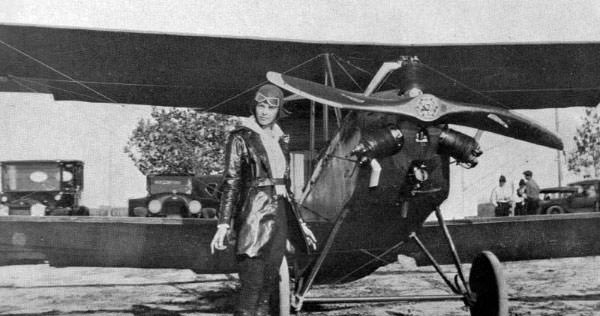
#5 EARHART WAS THE FIRST WOMAN TO FLY ACROSS THE ATLANTIC
In 1927, American aviator Charles Lindbergh made headlines all over the world by making the first solo transatlantic flight. Mrs. Amy Phipps Guest, a 54 year old socialite, wanted to be the first woman to make the flight across the Atlantic. She purchased a plane, hired a crew and started planning for her flight. She then recruited Mr. Wilmer Stultz, as her pilot, and Mr. Louis “Slim” Gordon, as her copilot. However, Mrs. Guest’s family intervened to convince her that the journey was too dangerous as many people had perished while attempting it. So, she enlisted George Putnam, the famous publisher, and another pilot, Capt. Hilton H. Railey, to help her find the right girl. In April 1928, Amelia Earhart received a phone call from Railey asking her “Would you like to fly the Atlantic?” and she replied in the affirmative. The team departed from Trepassey Harbor, Newfoundland, Canada on June 17, 1928, and reached Burry Port, Wales, UK approximately 21 hours later. Earhart thus became the first woman to fly across the Atlantic. However, she merely traveled as a passenger and she told the press, “Stultz did all the flying—had to. I was just baggage, like a sack of potatoes.”
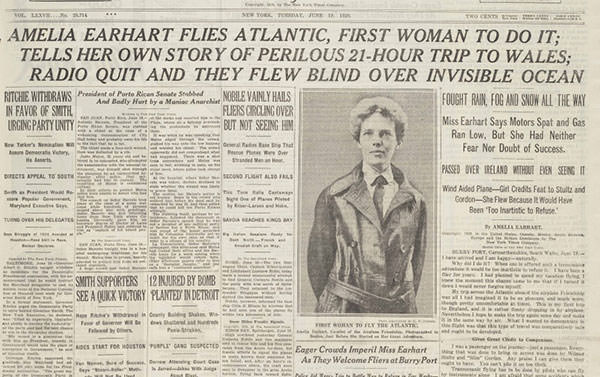
#6 HER IDEAS ON MARRIAGE WERE LIBERAL
After her transatlantic flight, Amelia Earhart became a huge celebrity. She actively endorsed a number of products which helped her finance her flying. She created a number of firsts in female aviation. Among other things, she became the first woman to fly solo across the North American continent and back; and the first woman to pilot an autogyro. Earhart also became a leading voice for promoting female aviation. She was instrumental in the establishment of Ninety-Nines, an international organization for women pilots. On the personal front, Amelia Earhart married George P. Putnam on February 7, 1931 in Noank, Connecticut. Putnam, a highly successful promoter, came to know her while searching for a suitable candidate for Mrs. Amy Phipps Guest. After the transatlantic flight, he helped her with her best-selling book on the experience titled 20 Hrs., 40 Min. Earhart’s ideas on marriage were liberal for the time and she referred to it as a “partnership” with “dual control”. In a letter to Putnam, she wrote, “I want you to understand I shall not hold you to any medieval code of faithfulness to me nor shall I consider myself bound to you similarly.” She also kept her own name.
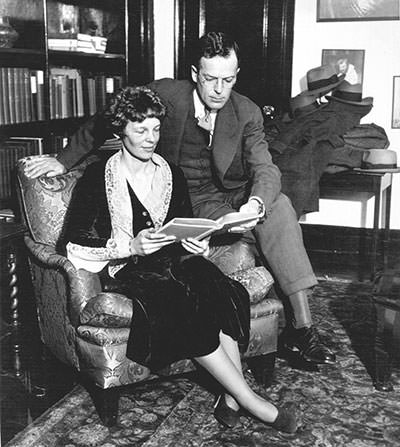
#7 AMELIA EARHART IS MOST FAMOUS FOR BEING THE FIRST WOMAN TO FLY SOLO ACROSS THE ATLANTIC
After feeling like a “sack of potatoes” during her transatlantic flight, Earhart had been determined to make the flight alone. On the afternoon of May 20, 1932, she set off from Harbour Grace, Newfoundland, Canada intending to land in Paris. After a flight lasting 14 hours, 56 minutes during which she contended with strong northerly winds, icy conditions and mechanical problems, Earhart landed in a pasture at Culmore, north of Derry, Northern Ireland. Amelia Earhart thus became the first female aviator and the second person to fly solo nonstop across the Atlantic Ocean. In recognition of her achievement, the US Congress awarded her the Distinguished Flying Cross making her the first woman so honored. She was also awarded the Gold Medal of the National Geographic Society from President Herbert Hoover; and the Cross of Knight of the Legion of Honor from the French Government. Over the next few years, Earhart set many women’s speed and distance aviation records in a variety of aircraft.
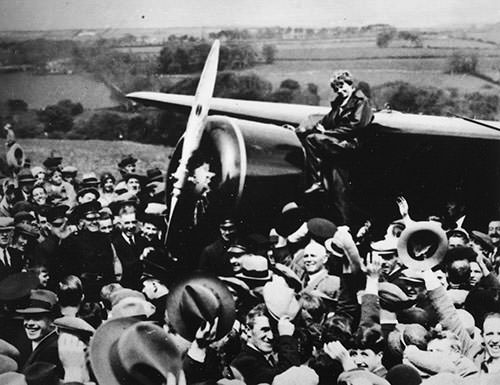
#8 SHE DISAPPEARED NEAR HOWLAND ISLAND IN 1937
In 1936, Amelia Earhart began planning a round the world flight. While she would not be the first aviator to circumnavigate the earth, she would be the first to do it around the equator. After failing in her first attempt, Earhart and her navigator, Fred Noonan, departed from Miami on June 1, 1937 on a Lockheed Electra 10E. Their plane crossed the Indian Ocean and reached Lae, New Guinea on June 29. Around 22,000 miles of the journey had been completed and the remaining 7,000 miles would take place over the Pacific. They set off from Lae on July 2 intending to land on Howland Island, located between Hawaii and Australia. A flat piece of land 6,500 feet long and 1,600 feet wide, Howland Island was a difficult spot for landing; and Earhart and Noonan had radio communication with a US Coast Guard vessel, Itasca, stationed off Howland Island. However, as they neared Howland Island, they were unable to make sufficient connection with the Itasca or to land on the island. Their last communication was at 8:43 a.m. Around an hour later, search for Earhart and Noonan began and it lasted till July 19, 1937. After the official search by US Navy and Coast Guard, Earhart’s husband Putnam financed a private search but no trace of the Electra or its occupants was found. Amelia Earhart was declared legally dead on January 5, 1939.

#9 THE ARE NUMEROUS THEORIES REGARDING HER DISAPPEARANCE BUT IT STILL REMAINS A MYSTERY
The mysterious disappearance of Amelia Earhart has led to many theories and numerous articles and books have been written about it. Many researchers believe that the Electra ran out of fuel and was forced to land on sea leading to the death of its occupants. The other prominent theory is that Earhart landed on the nearby Gardner Island. British officials discovered a partial human skeleton on Gardner Island in April 1940. The bones were examined but it was concluded that they were likely those of a short, stocky European man. However, in 1998, investigators determined that the bones could have belonged to a taller-than-average woman of European descent leading to speculation whether Earhart spent her last days as a castaway and died on Gardner Island. Other theories regarding her disappearance include that she was working as an American spy against Japan and was captured and executed by the Japanese forces; that she crashed at the airfield at Rabaul, New Britain; and that she survived and took on another identity becoming Irene Craigmile Bolam.
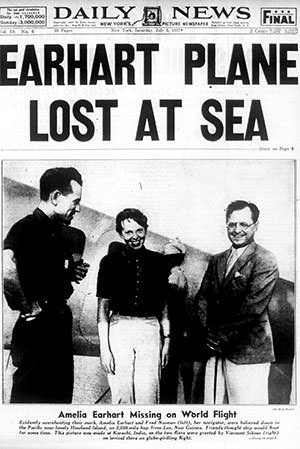
#10 EARHART IS PERHAPS THE MOST FAMOUS FEMALE PILOT IN AVIATION HISTORY
Amelia Earhart was an international celebrity during her lifetime. Her life and achievements as well as her mysterious disappearance have ensured her popularity long after her death. Earhart is perhaps the most famous female pilot in aviation history and she not only inspired a generation of female aviators but also served as a motivation for women to excel in their chosen profession. In 1968, she was inducted into the National Aviation Hall of Fame and in 1973, she became a Member of National Women’s Hall of Fame. In 2013, Flying magazine ranked Earhart No. 9 on their list of the “51 Heroes of Aviation”. She has been honored numerous times and many places have been named after her including a corona on Venus and a lunar crater. Amelia Earhart is one of the leading feminist icons of the 20th century.

